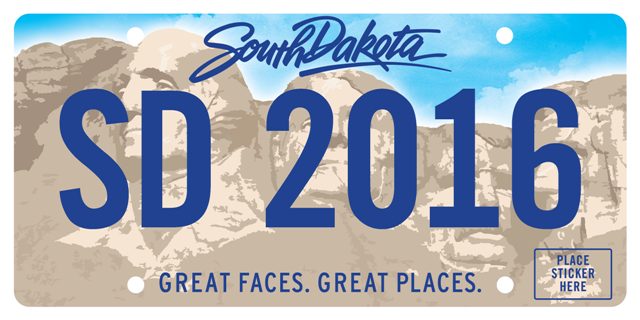Edgemont Area Deputy: Fall River County Sheriff’s Office is accepting applications for a full time deputy for the Edgemont Area. Must live within three miles of Edgemont upon hire. Must be able to think and act quickly under pressure; remain calm in stressful situations; demonstrate ethical behavior; pass a background check and be physically able to perform job functions. Shifts may vary and may include weekends, overnight and holiday hours. Starting wage is $14.50 per hour if uncertified, $16.50 if SD state certified. Training and certification provided and required for continued employment. Benefits include paid health & dental insurance, vacation, holidays, sick leave and SD Retirement. Apply at the Sheriff’s Office, 906 N River St, or see Law Enforcement Application on employment page. Open until filled.
Lands Transferred from Public to Private Ownership
The Department of Agriculture recently transferred several isolated properties in Fall River County into private hands. These properties were previously under the care of the Buffalo Gap National Grasslands and the BLM.
The map above shows in red the locations of these properties. All are in the south half of the county, most of them have little accessibility.
If you plan to hunt or hike in these areas please check the updated map book or the online interactive map, or contact the GIS Department at 605-745-7584 to ensure that you do not trespass on these recently purchase properties.
Legal Descriptions for the land transferred are listed below.
Township 9, Range 2:
Section 26: SW1/4SE1/4
new map
Township 10, Range 2:
Section 1: Govt Lots 1, 2, 3, S1/2NE1/4, SE1/4NW1/4, NE1/4SW1/4, N1/2 SE1/4, Less Hwy ROW
new map
Township 10, Range 6:
Section 10: SW1/4
Section 13: S1/2SW1/4, SW1/4SE1/4
Section 18: Govt Lot 4
Section 24: SW1/4
new map
Township 11, Range 4:
Section: 11: NW1/4
Section 24: N1/2N1/2
Section 26: SW1/4NE1/4, N1/2NW1/4, SE1/4NW1/4
Section 27: NW1/4
Section 28: W1/2NW1/4, Less RR & Hwy
new map
Township 12, Range 4:
Section 18: N1/2NE1/4, SW1/4NE1/4
new map
Township 12, Range 8:
Section 8: NE1/4SE1/4
Section 10: NW1/4
new map
Township 12, Range 9:
Section 8: SE1/4
Section 9: NW1/4
new map
New License Plate Design Unveiled for 2016
 New 2016 South Dakota license plate design unveiled
New 2016 South Dakota license plate design unveiled
PIERRE, S.D., — An image of the new license plate design for the 2016 license plate reissue was unveiled by the South Dakota Department of Revenue, Motor Vehicle Division.
The new license plates will be issued beginning January 1, 2016.
The standard license plates currently identifying South Dakota motor vehicles have been in use since 2006. The plates are losing reflectivity, becoming damaged and suffering other readability problems.
The 2016 reissue will add up to approximately 1.5 million non-commercial vehicle and motorcycle plates consisting of the standard plate, the emblem plate, personalized plates, amateur radio, low-speed vehicles and the commercial radio plate.
The design was a cooperative effort between Gov. Daugaard, the Department of Revenue Motor Vehicle Division and the South Dakota Department of Tourism and reflects a partnership in promoting South Dakota.
The license plates will continue to be made at Pheasantland Industries located in the South Dakota State Penitentiary in Sioux Falls, S.D.
Fall River & Oglala Lakota County residents can renew their annual motor vehicle registration at the Fall River & Oglala LakotaTreasurer’s office in Hot Springs, at a self-service terminal (throughout the state) or from their Motor Vehicle customer portal at https://MySDCars.sd.gov. Those who do so after Jan. 1, 2016, will receive the new license plates.
Fall River/Oglala Lakota County Treasurer – Kelli Rhoe (605) 745-5145
Employment – Truck Driver / Heavy Equipment Operator
The Fall River County Highway Department is looking for a full time Truck Driver / Heavy Equipment Operator. Applicant must possess a Class “A” C.D.L. For more information call the county highway department at 605-745-5137.
Applications for this position can be obtained at the following locations: The SD Department of Labor, Fall River County Courthouse, the Fall River County Highway Department Office, or on the Fall River County website.
Full Time Employment – Dispatch
Full-time 911 Dispatcher: Fall River County Emergency Management is accepting applications for a full time 911 Dispatchers. The starting salary is $12.00 per hour. The position requires SD State Certification for radio dispatching. The training, completed in Pierre, SD will be provided to successful applicants. The position requires working different shifts and may require holiday work. The position involves substantial public contact, receiving incoming radio and phone calls, and entering information into the computer aided dispatch system. Individuals must be able to multi task with accurate typing (35 words per minute) and computer skills. Position requires a medical physical (UA and hearing test), fingerprinting and background check. Open until filled.
See Employment page for application and other job openings.

